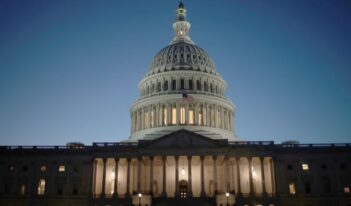
A proposed law would reduce the amount households spend on health care each year.
A proposed law, spanning just over one page and containing only 109 substantive words, could mean for almost 300,000 people the difference between having health insurance or going uninsured.
The proposed Fair Indexing for Health Care Affordability Act would amend part of an obscure provision of the Patient Protection and Affordable Care Act (ACA) that governs how much individuals may pay out of their own pockets for health coverage each year.
Introduced by U.S. Senators Jeanne Shaheen (D-N.H.), Chris Murphy (D-Conn.), Richard Blumenthal (D-Conn.), and Tammy Baldwin (D-Wis.), the bill would overturn a rule on out-of-pocket expenses issued by the Trump Administration, a rule which departed drastically from an earlier rule adopted by the Obama Administration.
The core issue derives from a provision in the ACA that calls for annual limits to be imposed on out-of-pocket medical expenses—deductibles, copayments, and coinsurance—under certain private health insurance plans, including those offered on the ACA’s state-based marketplaces. Each year, the federal Centers for Medicare and Medicaid Services (CMS) adjusts this limit on out-of-pocket expenses for all households to reflect changes in the price of private health insurance.
The limit is indexed to a value called the “premium adjustment percentage,” which is the growth rate in the cost of private health insurance since 2013. That percentage in growth is applied to $6,350.
The Trump Administration’s rule for 2020 places the out-of-pocket limit at $8,150 for individuals and $16,300 for families, a $200 and $400 increase from 2019, respectively. By the Administration’s own estimates, from 2020 to 2023, the raising of this limit will mean that 70,000 people each year—or 280,000 total—will no longer enroll in health insurance through the ACA’s state-based insurance exchanges, as the size of the cap no longer makes insurance affordable.
Since 2015, CMS has calculated the premium adjustment percentage by only considering the growth rate for employer-sponsored plans, as the employer-sponsored insurance market has been more stable and thus may better indicate the value of private health insurance.
Under the Trump Administration’s rule, however, the out-of-pocket limit also takes into account the prices of individual plans offered on the ACA state-based marketplaces, which some experts argue are too volatile to reflect accurately the true price of private health insurance.
Without including the costs of individual plans, the out-of-pocket limits for individuals and families would not have increased—they would have stayed at the previous year’s calculations of $7,950 and $15,900, respectively.
When the Trump Administration proposed changing the calculation to include individual insurance plans, it argued that the new limit provides “a more comprehensive and accurate measure of private market premiums.”
In announcing its final rule, CMS justified the increased out-of-pocket costs and potential annual loss of 70,000 insureds by pointing to lower costs for the federal government. In either case—whether insured or not—households will be paying more for health care services, which has a chilling effect on seeking care. For that reason, CMS argued that the rule will reduce “spending on health care services that are personally only marginally valued but that imposes costs on the federal government through subsidies.” CMS predicted that about 1 billion fewer dollars would be spent on the ACA premium tax credit marketplace subsidy from 2020 to 2023 due to lower insurance enrollment.
The proposed Fair Indexing for Health Care Affordability Act would, in effect, nullify the Trump Administration’s rule by requiring CMS to consider the costs only of employer-sponsored insurance when calculating the premium adjustment percentage.
The bill would not only reduce the limits on out-of-pocket costs for the privately insured, but could also lead to lower monthly premiums among those purchasing their insurance on the ACA marketplaces. Often, the U.S. Department of Treasury and the Internal Revenue Service (IRS) adopt CMS’s indexing methodology to determine who is eligible for the ACA’s premium tax credits and the value of those premium tax credits. Shortly after CMS issued its final rule, the IRS published guidance doing just that.
As a result of the change in indexing methodology across CMS and the IRS, the progressive-leaning Center on Budget and Policy Priorities predicts that the change could result in increased premiums for at least 7.3 million of the over 9 million people receiving ACA subsidies on the exchanges.
Procedurally, critics suggest that both the CMS rule and IRS guidance could be subject to a legal challenge because CMS does not have authority over the premium tax credit program and the IRS’s guidance should have gone through formal notice-and-comment rulemaking.
The bill comes at a time when health care is a top issue for American voters ahead of the 2020 elections. It also stands alongside about 10 different proposals currently introduced in Congress for “Medicare for All” or public health insurance plans. Some experts predict that Medicare for All may never become a reality, at least not any time soon. The Fair Indexing for Health Care Affordability Act, however, could provide an immediate solution to what its sponsors have identified as a problem in the way that the government regulates health care costs.
The Fair Indexing for Health Care Affordability Act was introduced in the Senate in November 2019. U.S. Representatives Doris Matsui (D-Calif.), Steven Horsford (D-Nev.), and Jeff Van Drew (R-N.J.) introduced a similar bill in the House in early December 2019.



